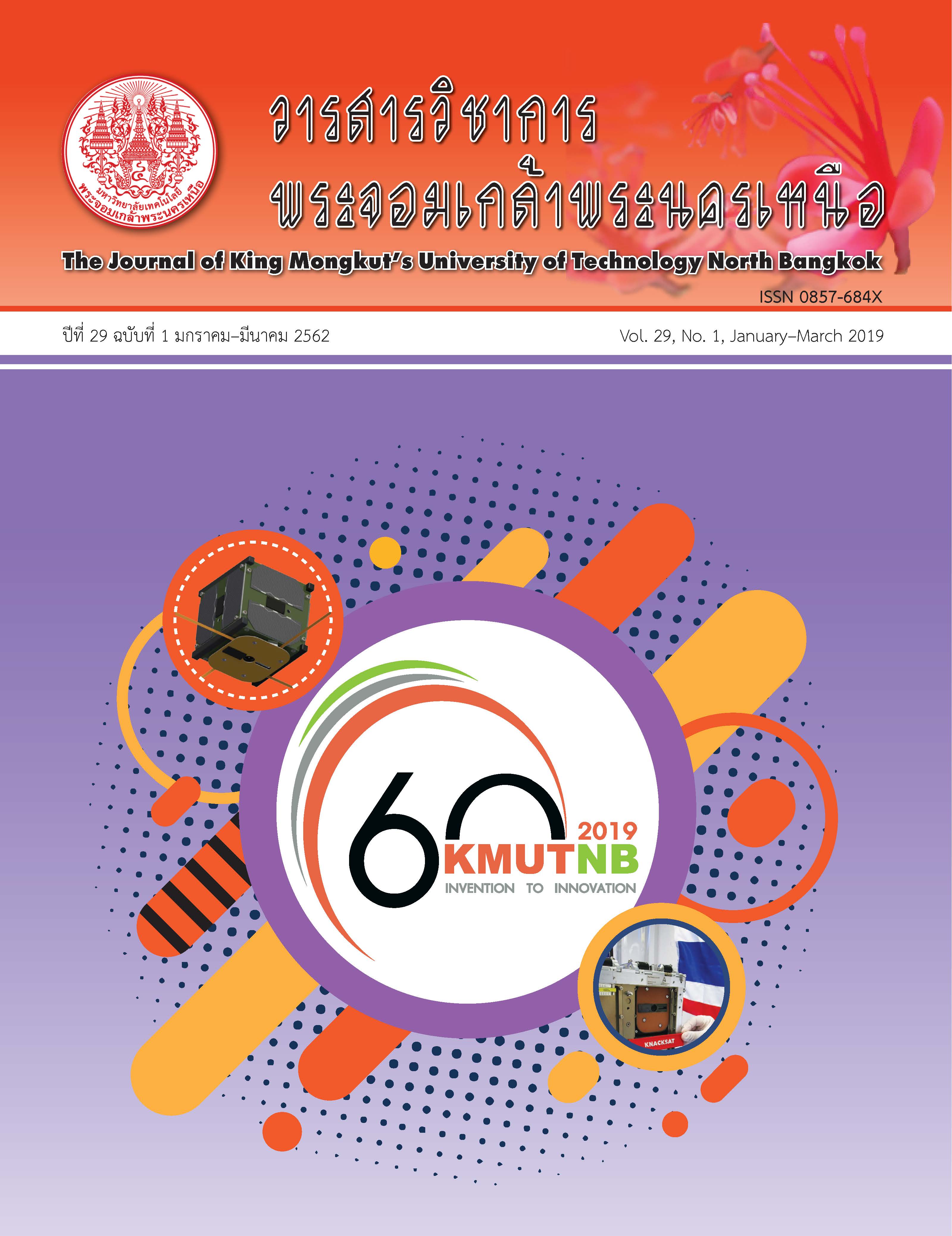The Impact of Inrush Current from Medium Voltage Capacitor Banks Switching: A Case Study of MEA
Main Article Content
Abstract
Increasing the stability of the power system is one of the methods used in the Metropolitan Electricity Authority (MEA). This method compensates the reactive power from switching the capacitor banks into the electrical system by using a circuit breaker to connect the capacitor bank. From the switching a high level of inrush current will be generated which can cause serious damage to the capacitor bank. Therefore, this study investigates the impact of inrush current using circuit breaker to connect the capacitor bank by modeling electrical system with ATP-EMTP transient analysis program. The result of the study reveals that the current and voltage while switching the capacitor bank can be determined the effect of switching on two cases. Case 1: The simulation of switching power supply capacitor bank for one set showed that the peak current was 1.610 kA in phase A at 90 and 270 degrees and the maximum voltage in phase A was 16.751 kV at 90 and 270 degrees. Case 2: the simulation of switching power supply capacitor bank for set together with another capacitor bank, showed the peak current was 1.829 kA at 90 and 270 degrees in phase A and the maximum voltage in phase A was 17.832 kV at 90 and 270 degrees.
Article Details
The articles published are the opinion of the author only. The author is responsible for any legal consequences. That may arise from that article.
References
[2] IEEE Guide for the Protection of Shunt Capacitor Banks, IEEE Standard C37.99-2000, 2013.
[3] R. P. Singh, Digital Power System Protection. India: Prentic-Hall, 2007.
[4] R. C. Dugan, Electrical Power Systems Quality. McGraw- Hill, 1996.
[5] P. A. A. Pramana, A. A. Kusuma, and B. S. Munir, “Inrush current investigation of capacitor bank switching for 150kV electrical system in Indonesia,” presented at the International Conference on High Voltage Engineering and Power Systems (ICHVEPS), Bali, Indonesia, Oct. 2–5, 2017.
[6] R. Sévigny, S. Ménard, C. Rajotte, and M. McVey, “Capacitor measurement in the substation environment: A new approach,” presented at the IEEE 9th International Conference on Transmission and Distribution Construction, Operation and Live-Line Maintenance Proceedings, Quebec, Canada, Oct. 8–12, 2000.
[7] G. Brunellom, B. Kasztenny, and C. Wester, “Shunt capacitor bank fundamentals and protection,” presented at the Conference for Protective Relay Engineers, Texas A&M University, US., 2003.
[8] T. Suwanasri, S. Wattanawongpitak, and C. Suwanasri, “Multi-Step Back-to-Back capacitor bank switching in a 115 kV substation,” presented at the ECTI International Conference on Electrical Engineering/Electronics, Computer, Telecommunications and information Technology, Chiang Mai, Thailand, May 19–21, 2010.
[9] A. M. Gole and J. Martinez-Velasco, “Modeling guidelines for switching transients,” IEEE Special Publication, TP-133-0, 1988.
[10] M. Kizilcay and L. Prikler, “ATP-EMTP Beginner’s guide for EEUG members,” European EMTP-ATP Users Group e.V, 2000.
[11] J. T. Ge, W. Cao, Z. G. Ding, and Y. Yu, “Short-circuit current calculation approach with dynamic load considered in PSS/E short circuit portion,” presented at the International Conference on Innovative Smart Grid Technologies–Asia (ISGT Asia), Tianjin, China, May. 21–24, 2012.
[12] Y. Kojima, S. Warashina, M. Kato, and H. Watanabe, “Application of knowledge engineering techniques to electric power System restoration,” in Proceedings of the International Workshop on Artificial Intelligence for Industrial Applications, Hitachi City, Japan, 2002, pp. 320–325.

